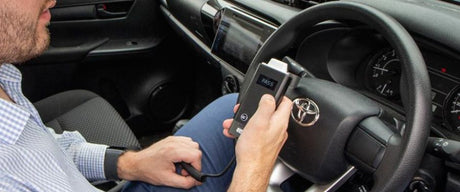On 19 November 2023, Catherine King, the Federal Minister for Infrastructure, Transport, Regional Development and Local Government, announced the expansion of the Roads to Recovery program.
This initiative supports the construction and maintenance of Australia’s local road infrastructure assets. Its funding will double from $500 million to a whopping $1 billion annually.
The same statement also read that the Black Spot program, a project that targets road locations that are prone to accidents, will receive an additional $40 million boost from $110m to $150m.
Minister King believes that this investment will “support regional communities, and help move freight to and from rural production centres."
"This funding will also give councils certainty and the ability to plan, along with a reduction in the administrative burden," Minister King said in a statement.
This positive news will undoubtedly spur Australian road safety to the next level and help Australians reach the Vision Zero target of zero deaths and serious injuries on our roads by 2050.
In this blog post, we will explore how this increase in funds affects Australian roads and its impact on Australian road alcohol safety.
How will this affect Australian roads?
A lot of this funding will go into delivering road safety improvements across road networks within local communities. After all, local governments look after more than 85% of Australian roads.
Kristy McBain, Minister for Regional Development, Local Government, and Territories believes that this will make a huge difference for councils in rural areas that have significant and ageing road networks under more demand than ever.
This will be a major boost for Australian road safety as most road crash deaths (55%) occur in regional areas of Australia. Two of the main reasons for the higher accident rate is due to high speeds and surface conditions. The latter is likely to see an improvement with the additional funds.
The National Road Safety Strategy suggests that these statistics can be improved through the building of wire ropes and other barriers, shoulder widening, protection on curves, and protection from roadside hazards, among others.
A 2022 study found that converting intersections to roundabouts was associated with up to a 50% reduction in the number of road traffic crashes that resulted in injury or property damage.
Will this help alcohol road safety?
From what we understand, this increased funding will mainly be channelled to improving infrastructure on Australian roads for smoother travelling.
This improved infrastructure, however, does not have a direct impact on reducing the number of alcohol-related crashes, fatalities and injuries. The 2022 study referenced earlier found strong evidence suggesting that random breath testing (RBTs), selective breath testing, and sobriety checkpoints were effective in reducing alcohol-related accidents on the road, not improved infrastructure.
The study showed that sobriety checkpoints reduced the number of crashes by 17%, while road safety campaigns were able to reduce the number of crashes by 9%. There was no evidence that indicated post-license driver education, such as the Drink Driver Behaviour Change Program was effective in preventing road traffic crashes.
LEARN MORE: Drink Driving Penalties in Australia
Although improved infrastructure will likely better road safety across Australia, it is unlikely that fewer drink driving cases will be a benefit from this initiative.
How can we improve alcohol road safety?
The study referenced above showed that effective methods to prevent drink driving instances include conducting more RBTs. Until 2020, the frequency of RBTs was maintained across the country. However, the onset of the pandemic led to a significant decrease of up to 64% in RBTs conducted.
In NSW, 36 people lost their lives to alcohol-related crashes in 2022, and this year, the number is currently at 35. Nearly 300 individuals in the state were also severely injured from alcohol-related collisions on the road.
The state also saw an alarming drink driving trend where more than 1 in 10 people admit to drinking and driving over the legal limit of .05%BAC.

LEARN MORE: Breathalysers to help solve NSW’s drink driving dilemma
Apart from conducting more random breath tests, Andatech believes that drink driving should be nipped in the bud, starting with improved awareness of alcohol safety by individuals and business owners who serve alcohol on their premises.
Having a personal breathalyser handy can help individuals effectively estimate their blood alcohol content and make informed decisions pertaining to their ability to drive.
A breathalyser should be essential in premises serving alcohol to ensure that drivers don't make the wrong decision before getting behind the wheel. Having a breathalyser accessible is likely to promote the frequency of breath alcohol tests in social settings and deter dangerous drink driving habits.
Browse through Andatech’s full range of personal breathalysers for individuals or workplace breathalysers for businesses to help find the right breathalyser to suit your needs. for businesses to help find the right breathalyser to suit your needs.





